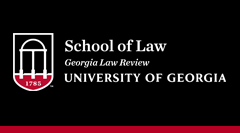Publication Date
2016
Abstract
Beards have always played an important role in human
society, especially in the religious context. One man's
beard even got him in front of the United States Supreme
Court. In Holt v. Hobbs, the Court decided that a prisoner
had a constitutional right to grow a one-half-inch beard
for religious purposes. In making the decision, the Court
made clear that the prisoner's religious interest far
outweighed any security threat that such a short beard
could pose to the prison. The Court declined to go any
further, however, in clarifying the beard length at which
the scales would begin to tip in favor of the prison's
security interests. Is a one-inch-long beard permissible?
What about two? This Note makes the case that this
decision has left confusion among state legislatures, lower
courts, and prison officials. It analyses possible solutions
the Court could adopt, which include a case-by-case
method, a categorical method, and a bright line rule
method. It then argues that a bright line rule for
permissible religious beard length should be adopted in
order to avoid confusion among lower courts in the wake
of this decision. It also examines the broader implications
of drawing arbitrary lines to govern matters of
fundamental rights that receive strict scrutiny analysis.
Recommended Citation
Schwartzenfeld, Dana A.
(2016)
"Let My People Grow: Putting A Number on Strict Scrutiny in the Wake of Holt v. Hobbs,"
Georgia Law Review: Vol. 51:
No.
1, Article 7.
Available at:
https://digitalcommons.law.uga.edu/glr/vol51/iss1/7
Included in
Law Enforcement and Corrections Commons, Religion Law Commons, Supreme Court of the United States Commons


